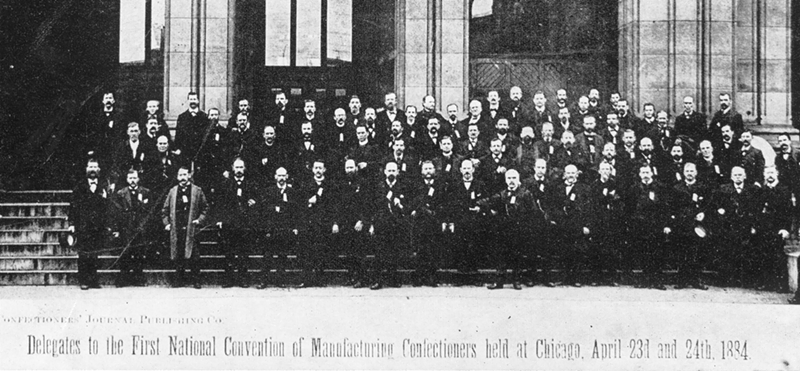
Dann Woellert, local food enthusiast and self-proclaimed food etymologist, is the author of Cincinnati Candy: A Sweet History. (He’s also written The Authentic History of Cincinnati Chili, Historic Restaurants of Cincinnati and his new book, Cincinnati Goetta: A Delectable History, is due later this year.) We got in touch with Woellert to discuss the significance of regional sweet treats and how they correspond with our history and culture.
“No one had really delved into (documenting local candy history),” Woellert says of Cincinnati Candy.
But before Cincinnati was known as a brewery city, it was a candy city with factories that shipped product all over the country. “In 1850 there were more candy factories than breweries in Cincinnati,” he says.
That was due in no small part to the immigrants defining our communities.
“From the 1860s to the 1890s, most of Cincinnati’s confectioners were German,” Woellert says.
This changed with the Balkan wars.
“Like the chili pioneers, immigrants from the area around Sparta, Greece immigrated to the United States and Cincinnati and dominated the candy industry. The Aglamesis family was part of this wave of Spartans who opened candy shops in Cincinnati,” he says.
And if you think that Feb. 14 is the nation’s biggest candy holiday, think again.
“Valentine’s Day has always been a way for the candy industry to boost sales between Christmas and Easter,” Woellert says.
Easter is the reigning sales champ, while Halloween and Christmas follow. “But everybody loves something sweet on Valentine’s Day. I prefer chewy cinnamon jelly hearts, myself.”
Dann's Fun Cincinnati Candy Facts
- Candy corn was first released commercially in Cincinnati in 1898 by the Goelitz Company, which went on to become the Jelly Belly Corporation out of California. They still make candy corn to the original Cincinnati recipe.
- Most early candy manufacturers in Cincinnati also sold and distributed fireworks.
- The inventor of the opera cream, Robert H. Putman, and the inventor of the marshmallow Peep, Roscoe Rodda, were partners in a Cincinnati candy business. They separated after there was a split in the Christian Catholic Apostolic Church, led by Dr. John Alexander Dowie, the religious cult in which they were both deacons. Dowie started the socialist religious community in Zion, Illinois, north of Chicago, which both Putman and Rodda visited and were active with.
- Doscher’s made a Goo Goo Cluster knockoff in the early 1950s called the Goober Cluster — around the same time that the Bluegrass classic “Foggy Mountain Breakdown” was being recorded at Cincinnati’s Herzog studio. Lester Flatt and Earl Scruggs went on to perform at the Grand Ole Opry, where the original Goo Goo Cluster would be the only candy advertised onstage (it’s also considered the nation’s first “combination” candy bar).
- Cincinnati claims the only candy in our nation’s history to be named after a famous musician: Jazz orchestra leader Paul Whiteman. It was called the “Paul-I-Plop,” and was made by the William C. Johnson Company here to promote his orchestra’s three-week stay in town at the Sinton Hotel. A 5-cent donut-shaped candy made of chocolate, caramel and coconut, it was similar to a modern-day Girl Scout Samoa cookie.
- Unfortunately, most of the chocolate Americans consume comes to us as the result of child slave labor in Africa. Ensure you’re getting ethical chocolate by supporting “bean-to-bar” producers, who source their beans through practices like direct trade and fair trade. Award-winning local favorite Maverick Chocolate is one such ethical bean-to-bar chocolatier.
- Dolly Varden Chocolate company in the West End of Cincinnati is credited with introducing the chocolate cherry cordial to the American market in the early 1910s.
- Cincinnati Candy Barons started the National Confectioners Association in 1884, still the longest continually-operating professional organization in the United States; they were also instrumental in forming what became Sweetest Day in the early 1910s, leading up to WWI. Sweetest Day was not intended to be a Valentine’s Day-type holiday — rather, it was originally a benefit for orphans, the sick, the elderly and the infirm.

